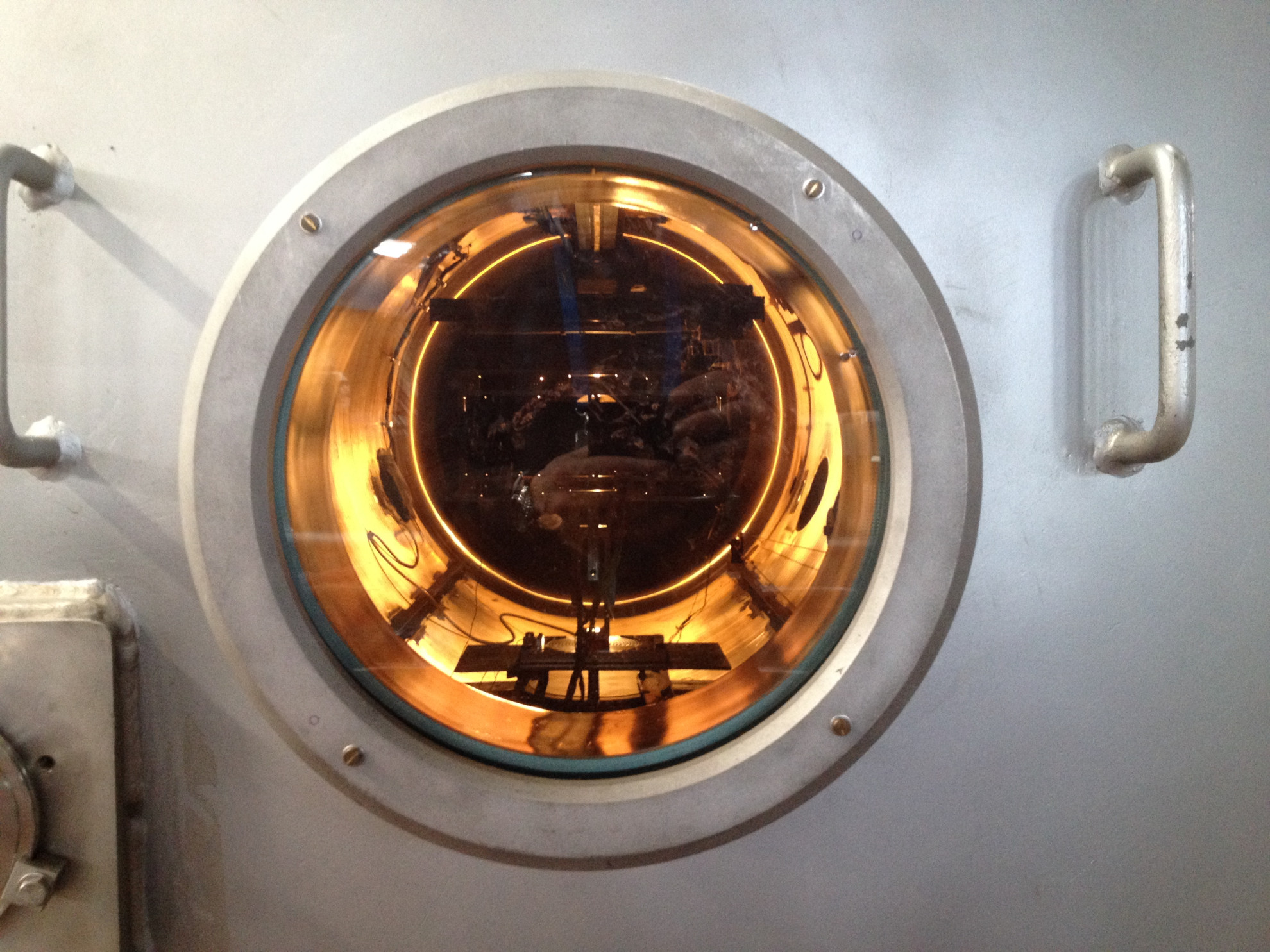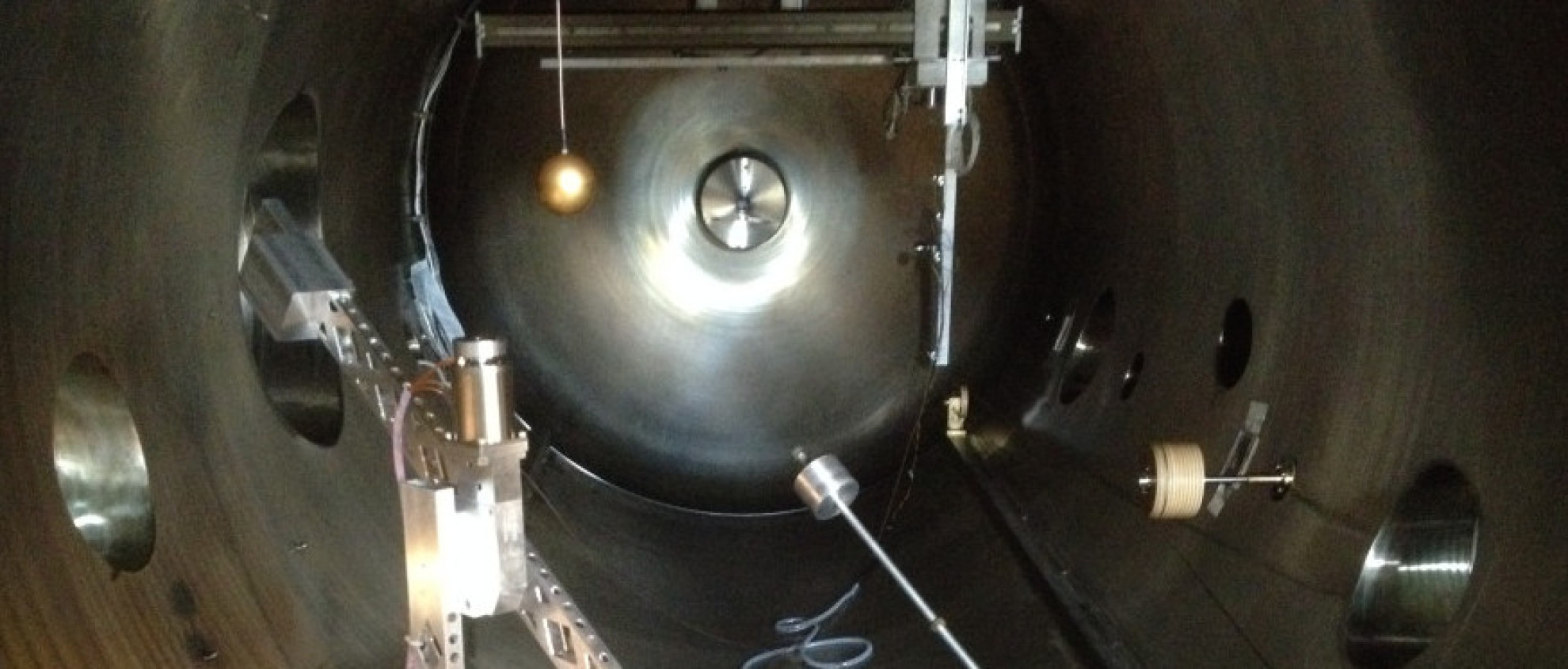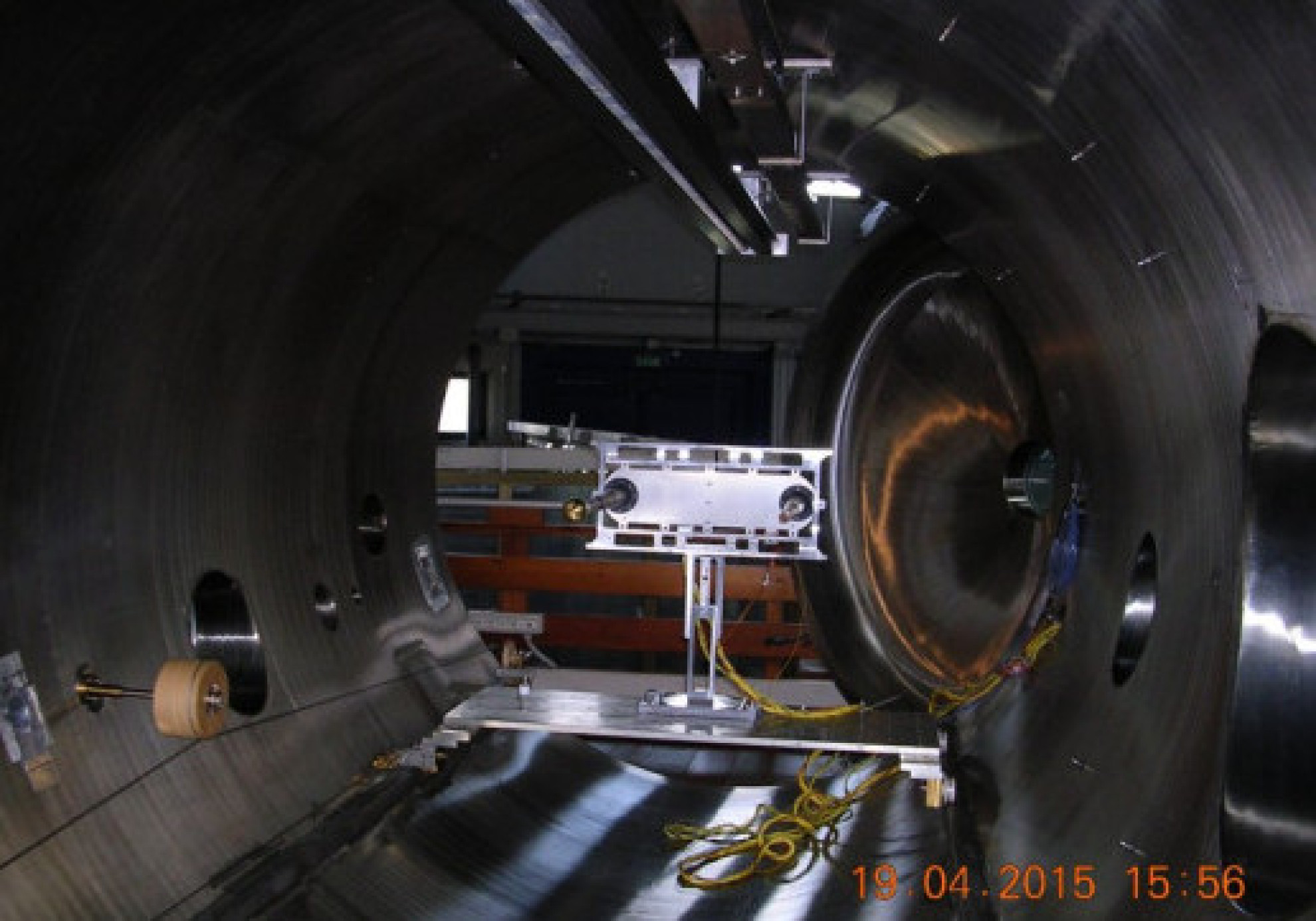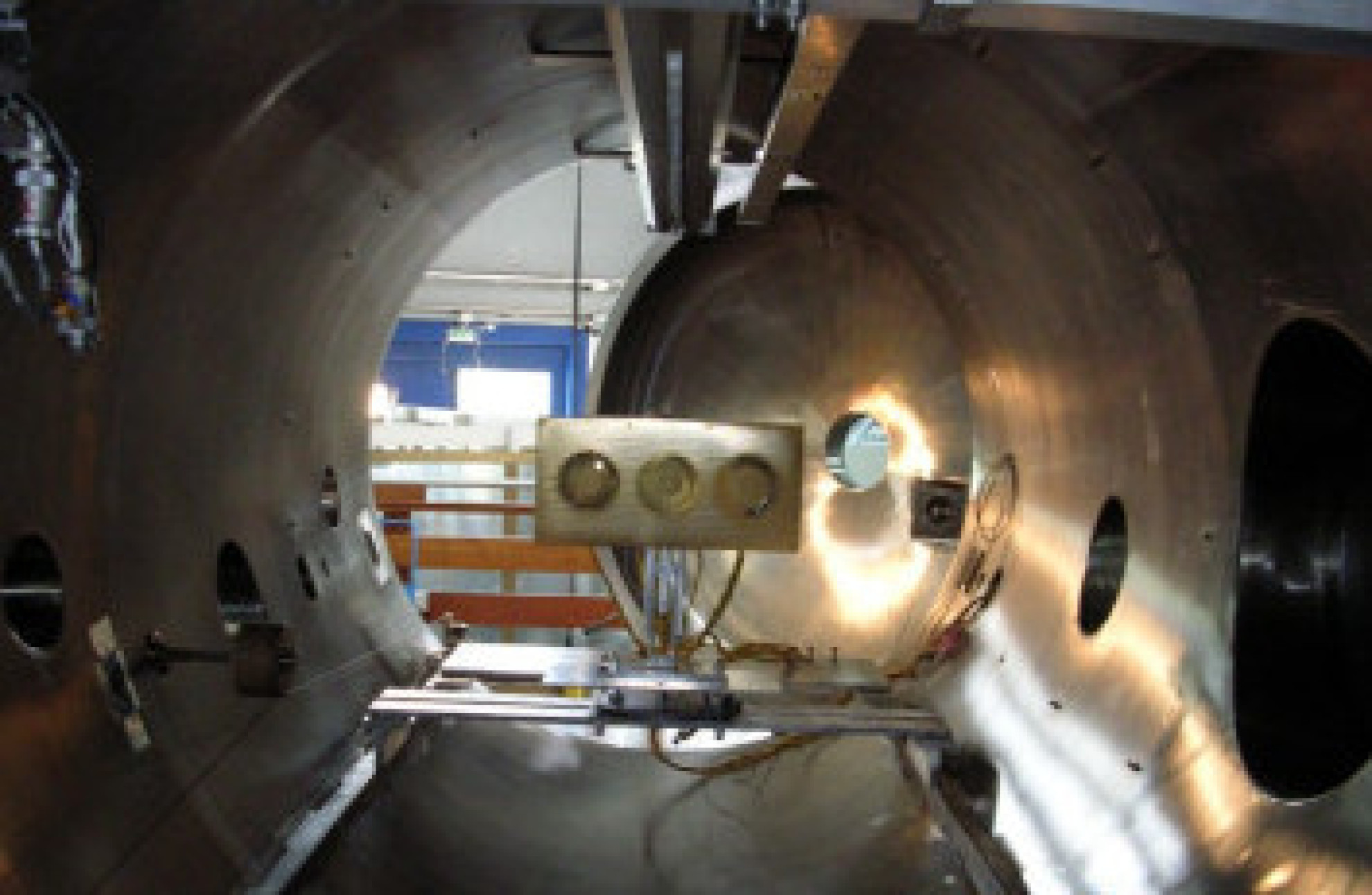In detail
INAF-IAPS Plasma Chamber Facility - named SWIPS (Solar Wind and Ionospheric Plasma Simulator) - is designed to produce a large volume of either ionospheric or interplanetary plasma (solar wind).
The facility has been operating since 1988, and over the years the performance of any of its subsystems (vacuum system, plasma sources, plasma diagnostics, data acquisition, mechanical solutions for remote handling of payloads, etc.) has been undergoing constant improvement.
Its core feature lies in the ability of its sources to produce plasmas whose characteristic parameters (density, electronic temperature, and ionic energies) span the typical ranges encountered in the Earth's ionosphere and interplanetary space. Inside the chamber, such plasmas are accelerated to a velocity that simulates either the relative motion of an object orbiting in the ionosphere (~8 km/s) or solar-wind speed (>300 km/s). This further enables lab simulations of compression and depletion phenomena typical of ram and wake regions forming around ionospheric satellites.
The Plasma Chamber is also equipped with a system of two-axis magnetic coils that control the environmental magnetic field. Therefore, conditions typical of equatorial and polar satellite orbits can be recreated by careful setting of plasma beam and magnetic field values.
The magnetic field amplitude spans the range from 10E-6 to 10E-4 T. The residual field is such that any plasma can be basically considered as non-magnetized, since the size of the electron gyroradius (at Te = 2000 K) is of the same order as chamber's dimensions (i.e., electron motion is not dominated by the field, but rather by collisions with chamber's walls).
The main experimental activities carried out at the facility comprise:
- design and development of plasma instrumentation, and related testing and calibration activities;
- compatibility testing for materials immersed in space plasmas, and technological solutions for space applications;
- plasma physics experiments, such as those investigating interactions with substances able to cause changes in plasma or generation of secondary populations (by charge exchange), or interactions with magnetized objects, as well as the assessment of space propulsion efficiency.
Scientific activity
- Tethered Satellite System (TSS) missions (NASA/ASI joint project)
TSS-1 mission and its TSS-1R reflight studied the electrodynamics of a tether system in the magnetized ionospheric plasma. Precisely, TEMAG (Tether Magnetic Field Experiment) and RETE (Research of Electrodynamic Tether Effects) experiments were designed to investigate electromagnetic fields around the satellite and tether system, with the aim to test and develop the capability for future tether applications on the Shuttle and Space Station.
A 1:10 scale model of the system was built in the laboratories of the Plasma Chamber Facility in order to study the formation of plasma sheats at various hollow-cathode (HC) source polarizations. In addition, an electron gun - designed to control the spacecraft potential during operations - was tested in a space plasma-like environment for future use during technical training of astronauts involved in the missions.
- BeppoSAX mission
The BeppoSAX satellite for X-ray astronomy was an Italian-Dutch project designed to study the origin of gamma ray bursts (GRBs).
The optical components of the system were tested in the plasma chamber in order to assess performance degradation from plasma-induced erosion, resulting in the development of an ad-hoc polarized grid to mitigate this effect.
- NSSC collaborations
Development and testing of plasma sensors for sounding rockets in cooperation with the Chinese National Space Science Center (NSSC).
- CSES-Limadou missions
In preparation to the first Chinese-Italian mission (CSES-01), the plasma chamber was accessed for testing and calibration of the Electric Field Detector (EFD-01) EM model (INFN), and of Langmuir probes and Plasma Analyzer (NSSC). SWIPS resources are currently involved in the full development of the EFD-02 detector scheduled to join the second mission (CSES-02), as well as in the testing and calibration of other payloads developed by the Chinese counterpart. CSES-02/EFD-02 comprises four electric-field sensors and satellite-embedded electronics, aiming to monitor (DC to 3.5 MHz) electromagnetic fields for the investigation of ionospheric disturbances possibly correlated to Space Weather phenomena and seismic precursors.
- PNR-PE15 activities
In the context of PNR-PE15 Extended Partnership program, the Plasma Chamber Facility is scheduled to host validation and calibration activities concerning Plasma Analyzer and Electric-Field Detector/Langmuir Probe prototypes for cubesats.
- Outreach activities
Collaborations with schools upon Alternance Training; scientific dissemination; scientific/technological collaborations promoted by the Technological Working Group of the Italian Space Weather Community (SWICo - http://www.swico.it/supporto-per-collaborazioni-tecnologiche/ ).
Properties
SWIPS NUTS & BOLTS
Inner chamber volume ≈ 9 m3
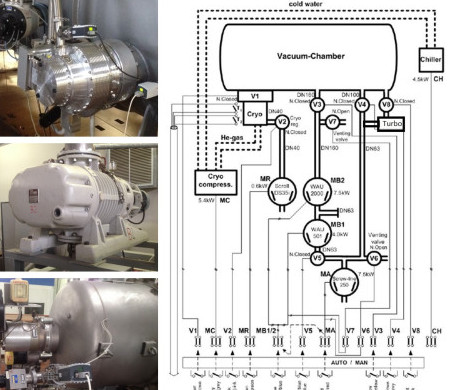
Ionospheric plasma:
mi= 40 a.u. (Ar)
Te=2000–4000 K
ne≈ ni ≈ 1011-1012m-3
vi ≈ 8 km/s
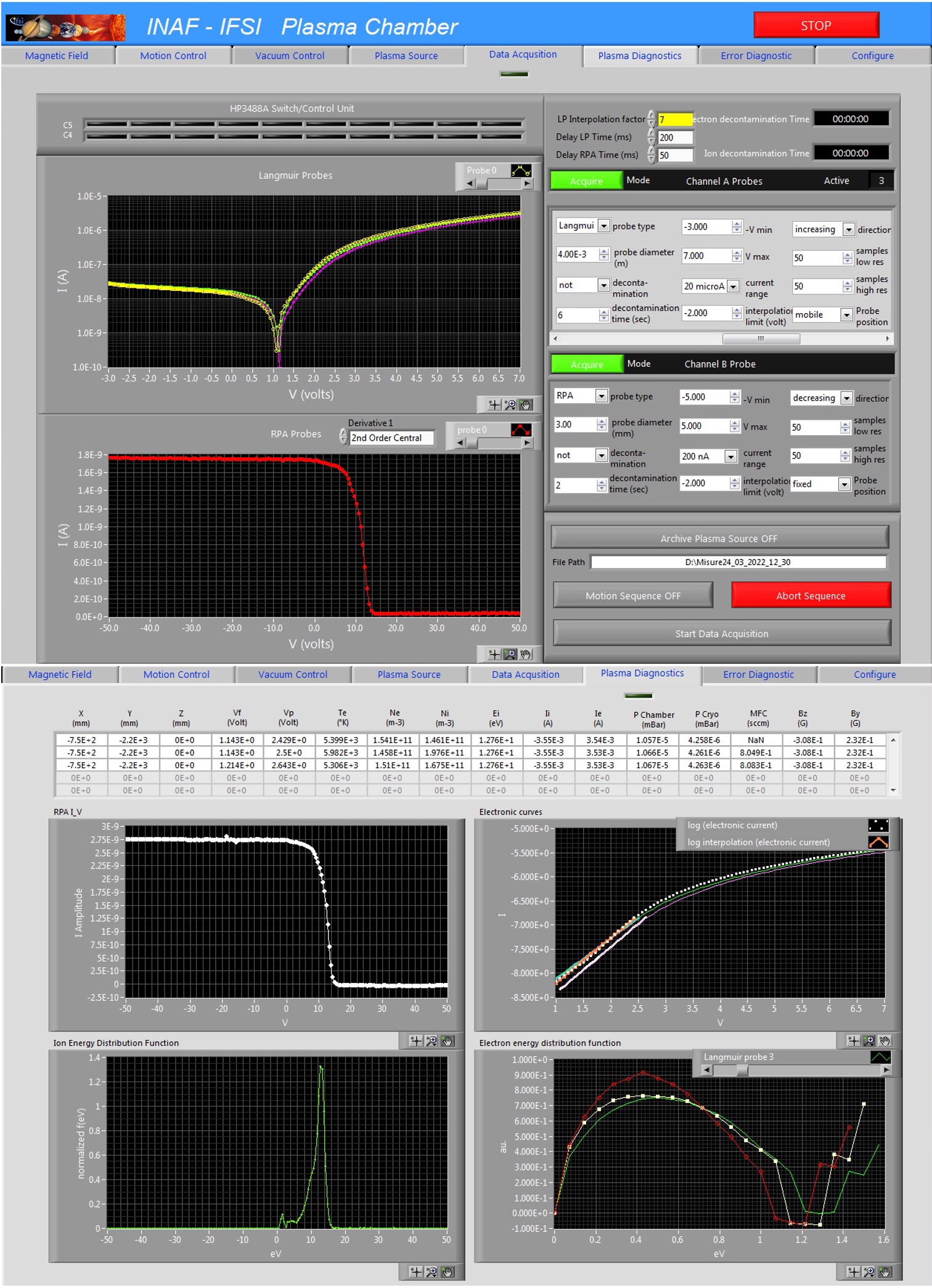
Interplanetary plasma:
mi= 4 a.u. (He)
Te=10000–20000 K
ne ≈ ni ≈ 107m-3,
vi ≈ 350 km/s


